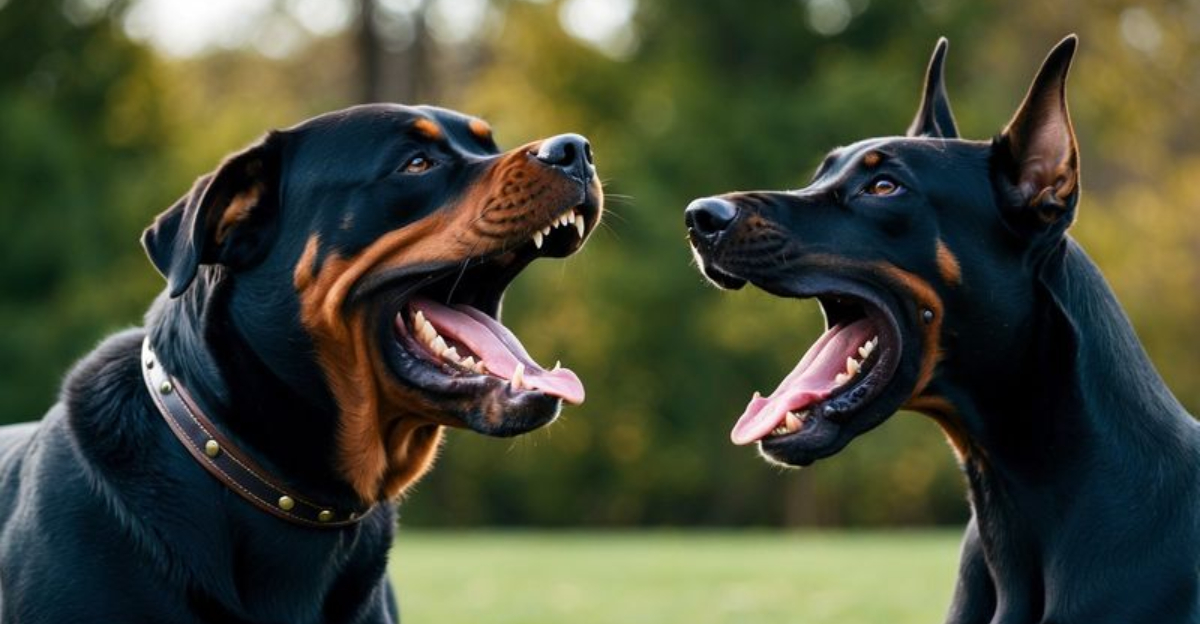When it comes to choosing a guard dog, Rottweilers and Dobermans are often at the top of the list. Both breeds are known for their intelligence, loyalty, and protective instincts. However, they have distinct differences that make them suitable for different types of households and security needs.
In this list, we will explore unique aspects that set Rottweilers and Dobermans apart as guardians. Understanding these differences will help you make an informed decision about which breed might best suit your lifestyle and security requirements.
1. Physical Build

Rottweilers possess a robust and muscular build, offering an imposing presence that serves as a deterrent to intruders. Their broad chests and strong limbs give them a commanding stance, making them appear powerful and unyielding.
In contrast, Dobermans are known for their sleek and agile frame, which allows for quick and nimble movements. Their lean bodies and long legs enable them to cover ground rapidly, offering an advantage in situations requiring speed and agility.
These physical differences influence their guarding styles, with Rottweilers often serving as solid barriers and Dobermans excelling in swift, responsive actions. Owners should consider these physical characteristics when deciding which breed aligns with their security needs.
2. Temperament
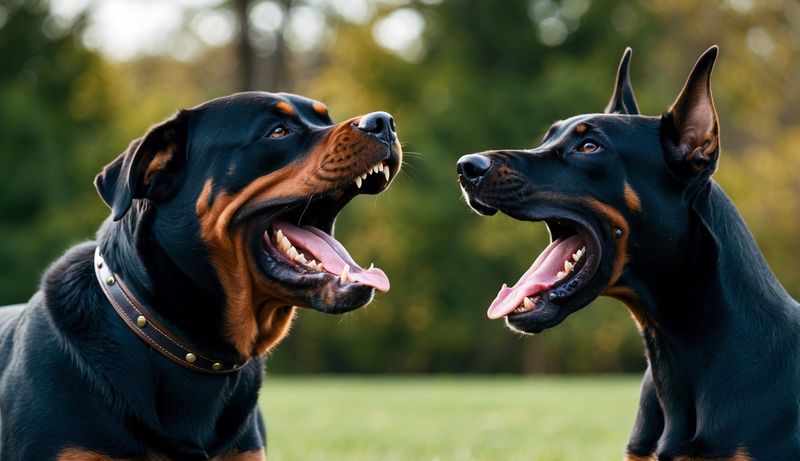
Temperament is a key differentiator between Rottweilers and Dobermans as guard dogs. Rottweilers tend to be calm and composed, exuding a steady confidence that can put potential threats on alert. This steadfast demeanor often translates to a more patient and calculated approach to guarding.
Conversely, Dobermans are known for their alertness and high energy levels. They are quick to respond to perceived threats, showcasing a proactive guarding style that emphasizes vigilance and rapid action. All in all, both of these breeds are true intruder nightmare dogs.
The choice between these temperamental traits depends on the desired guarding approach: a strategic, patient presence with a Rottweiler or an energetic, responsive guardian with a Doberman. Understanding these temperamental differences can guide owners in selecting the breed that best fits their environment.
3. Training Ease
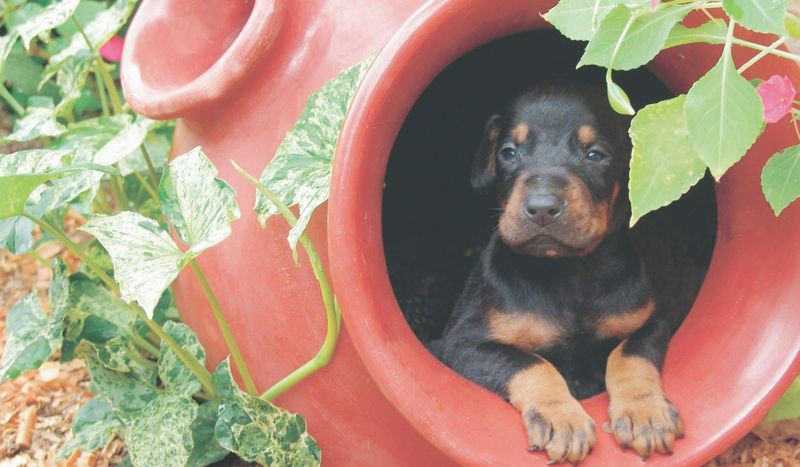
Both Rottweilers and Dobermans are intelligent, but their training ease varies. Rottweilers often require a firm yet gentle approach, benefiting from consistent reinforcement and clear leadership. They respond well to a structured training environment where their intelligence is nurtured.
On the other hand, Dobermans are highly trainable and eager to learn, often grasping commands with remarkable quickness. Their enthusiasm for training sessions can make the process enjoyable, provided that the training is engaging and mentally stimulating.
For potential owners, the choice between breeds might hinge on the style of training they can provide: a more measured, patient approach for Rottweilers or a dynamic, interactive method for Dobermans. Recognizing these training nuances can lead to a more harmonious relationship between owner and dog.
4. Guarding Instincts
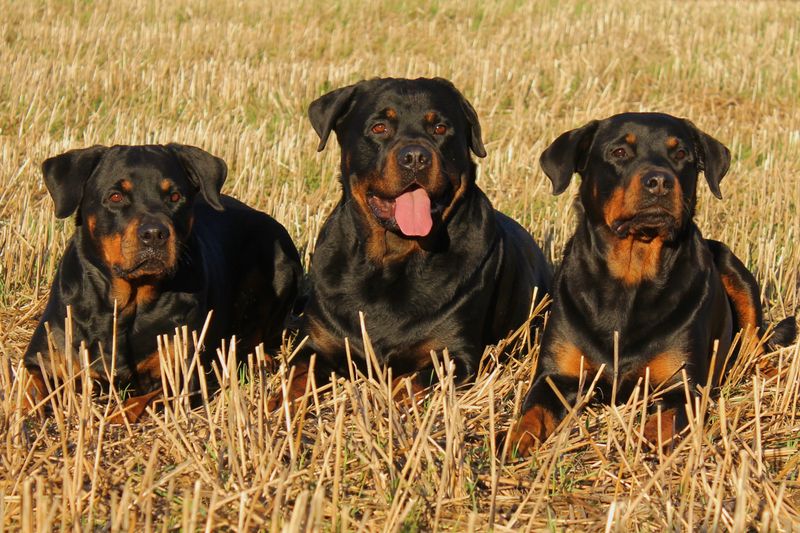
Guarding instincts are deeply ingrained in both breeds, yet they manifest differently. Rottweilers are naturally protective, often forming strong bonds with their family and displaying unwavering loyalty. This breed is likely to remain close, acting as a steadfast sentinel.
Dobermans, with their alert and watchful nature, tend to patrol their territory actively. They are keenly aware of their surroundings, often positioning themselves strategically to monitor entry points and potential threats.
These differences in guarding instincts mean Rottweilers might excel in environments where close protection is desired, while Dobermans are suited for larger spaces requiring diligent surveillance. Prospective owners should assess their specific security needs when choosing between these instinctive qualities.
5. Exercise Needs
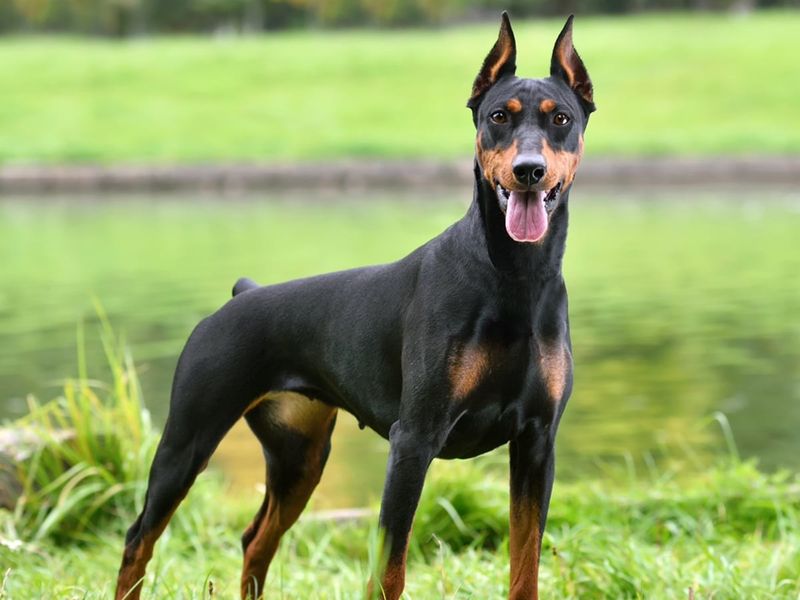
Exercise requirements for Rottweilers and Dobermans vary significantly and can influence their suitability as guard dogs. Rottweilers, while active, are generally content with moderate exercise routines that include daily walks and playtime.
In contrast, Dobermans demand high levels of activity to maintain their physical and mental well-being. They thrive on rigorous exercise and enjoy activities that challenge their agility and intelligence, such as agility training or extended runs.
Understanding these exercise needs is vital for potential owners, as fulfilling them ensures that the dogs remain healthy and effective in their roles as guard dogs. Balancing exercise commitments with each breed’s demands will foster a happier, more balanced canine companion.
6. Socialization
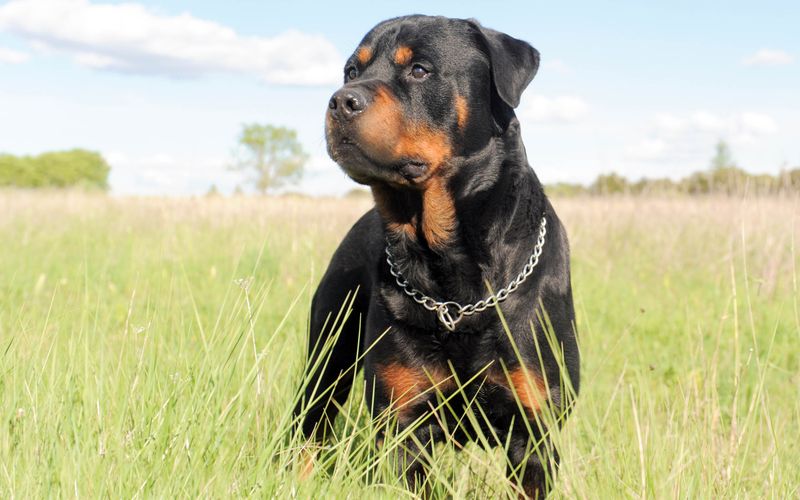
Socialization plays a crucial role in the development of both Rottweilers and Dobermans. Rottweilers are naturally reserved with strangers but can be socialized effectively to accept new people and situations with ease. Early and consistent socialization helps them to become well-rounded companions.
Dobermans, however, are often more outgoing and enjoy interacting with other dogs and humans. Their sociable nature, when nurtured from a young age, can lead to a friendly yet protective demeanor, making them approachable yet alert.
The level of socialization influences how each breed performs as a guard dog, with Rottweilers benefiting from a calm, composed approach to new experiences, and Dobermans thriving in dynamic social settings. Owners should tailor socialization practices to match the breed’s natural tendencies.
7. Family Compatibility
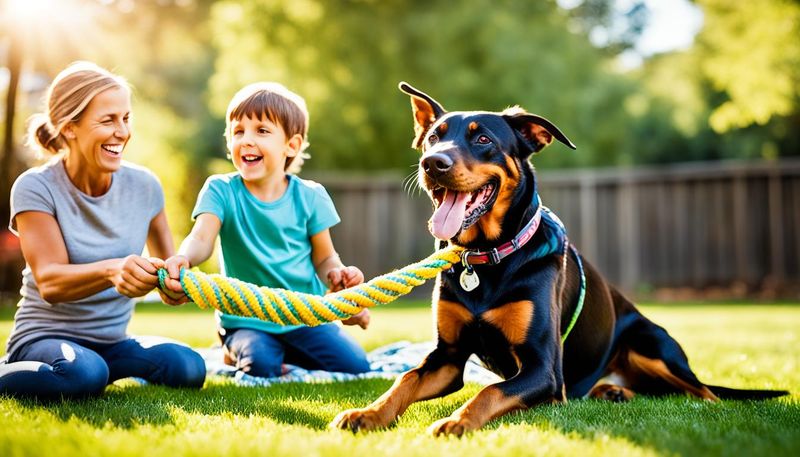
The compatibility of Rottweilers and Dobermans with family life differs based on their nature and needs. Rottweilers are often seen as gentle giants who enjoy the company of children and adults alike. Their protective instincts extend to their family members, creating a nurturing environment.
Meanwhile, Dobermans, known for their energetic and playful nature, also make excellent family dogs. Their affectionate behavior and interactive play make them great companions for active families willing to engage in regular activities.
When choosing between these breeds, families should consider their lifestyle and the level of engagement they can provide. Both breeds can thrive in family settings, but understanding their unique compatibility will enhance the bond and ensure a loving, protective relationship.
8. Intelligence
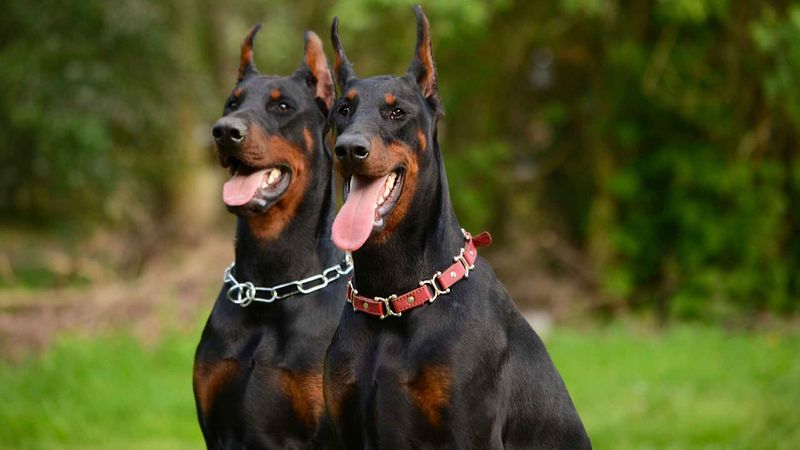
Intelligence is a hallmark of both Rottweilers and Dobermans, though it manifests differently in each breed. Rottweilers are known for their problem-solving abilities and can demonstrate great patience and thoughtfulness in challenging situations. Their intelligence often translates into a methodical approach to tasks.
Dobermans, on the other hand, exhibit quick thinking and adaptability. Their keen awareness and sharp instincts make them adept at learning new commands and responding to changes in their environment.
These intellectual strengths can be harnessed in various ways, from training and obedience to specialized tasks such as search and rescue. Understanding the distinct ways each breed exhibits intelligence helps owners tap into their potential as guard dogs, utilizing their unique cognitive skills.
9. Grooming Requirements
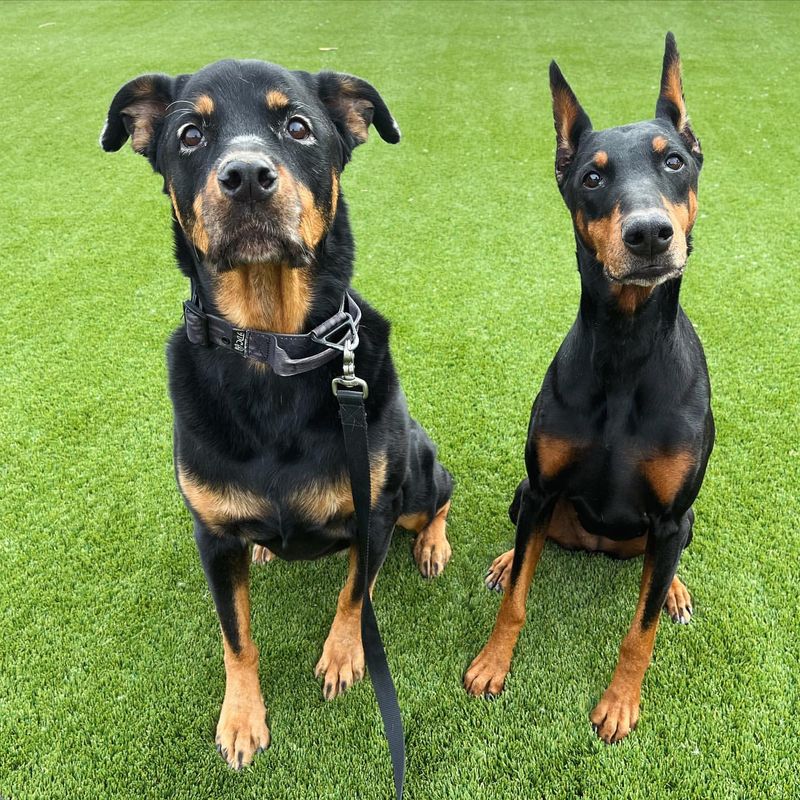
Grooming needs for Rottweilers and Dobermans are relatively low, yet they still require regular attention to maintain their health and appearance. Rottweilers have a dense double coat that sheds seasonally and benefits from weekly brushing to remove loose hairs and reduce shedding.
Dobermans, with their short and sleek coat, require less frequent grooming but still benefit from regular brushing to keep their coat shiny and healthy. Nail trimming, ear cleaning, and dental care are essential for both breeds to prevent health issues.
Understanding the grooming requirements of each breed ensures that they remain comfortable and well-maintained, contributing to their overall well-being and effectiveness as guard dogs. Owners should incorporate grooming into their routine, keeping their dogs looking and feeling their best.
10. Health Considerations

Health considerations are vital when choosing between Rottweilers and Dobermans as guard dogs. Rottweilers are susceptible to certain genetic conditions such as hip dysplasia and heart issues, which require regular veterinary check-ups and a healthy diet to manage.
Dobermans, while generally robust, can face health challenges like dilated cardiomyopathy and von Willebrand’s disease, necessitating vigilant health monitoring and preventive care.
Potential owners should familiarize themselves with the common health issues associated with each breed and ensure they can provide the necessary care and attention. Regular check-ups, a balanced diet, and appropriate exercise are critical to maintaining the health and longevity of these esteemed guard dogs.
11. Age And Longevity

The lifespan and aging process of Rottweilers and Dobermans can influence their role as guard dogs. Rottweilers typically have a lifespan of 8 to 10 years, with some individuals living beyond this range with proper care and attention to health.
Dobermans often enjoy a slightly longer lifespan, averaging between 10 to 12 years. Their longevity can be enhanced through a healthy lifestyle, encompassing regular exercise, a balanced diet, and preventive health care.
Understanding the age-related aspects of each breed helps owners plan for their dog’s long-term care and adaptation to their guarding role as they age. Proper management of their health and well-being ensures these loyal companions remain effective protectors throughout their lives.
12. Vocalization

Vocalization patterns differ between Rottweilers and Dobermans, impacting their guard dog effectiveness. Rottweilers are known for their deep, resonant bark, which serves as a powerful deterrent to potential intruders. They tend to vocalize when necessary, making their presence known without excessive noise.
In contrast, Dobermans are generally quieter, preferring to observe and assess situations before reacting. Their alert nature allows them to act swiftly and silently, choosing when to bark based on the threat level.
These vocalization tendencies should be considered when selecting a guard dog, as the preference for a loud alarm or a silent observer can influence the choice between breeds. Both methods offer distinct advantages, tailored to different security needs.
13. History And Origin
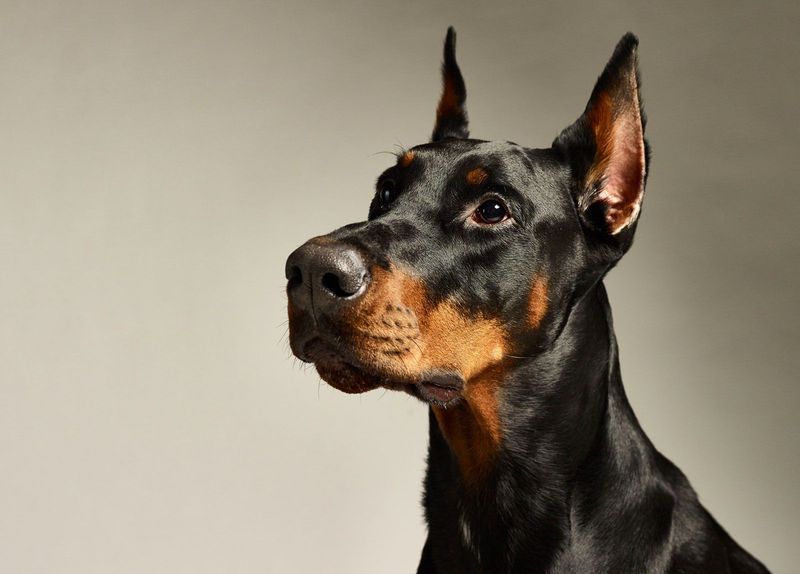
The historical backgrounds of Rottweilers and Dobermans contribute to their roles as guard dogs. Rottweilers trace their lineage back to ancient Rome, where they were used as herding and guard dogs by Roman legions. Their strength and endurance were prized in guarding livestock and property.
Dobermans were developed in 19th century Germany by Karl Friedrich Louis Dobermann, who sought to create a loyal and intelligent guard dog. Their purpose was to provide protection and companionship, resulting in a breed known for its loyalty and alertness.
These historical contexts have shaped the characteristics and guarding styles of each breed, adding depth to their modern roles. Understanding their origins can deepen an owner’s appreciation for their attributes and enhance the bond between dog and owner.
14. Dietary Needs
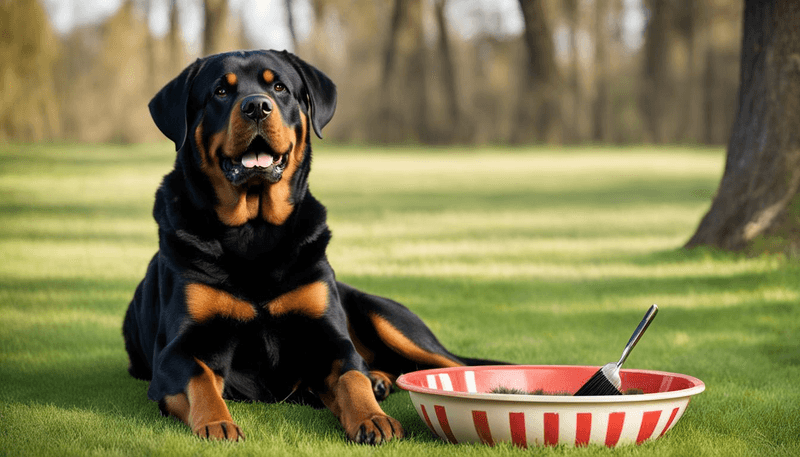
Dietary needs for Rottweilers and Dobermans vary, reflecting their physical builds and activity levels. Rottweilers require a balanced diet rich in protein and fat to support their muscular physique and energy requirements. Monitoring portion sizes is important to prevent obesity, a common concern in the breed.
Dobermans, with their leaner build, also benefit from a protein-rich diet, but their meals may require adjustments to meet their high energy demands. Regular feeding schedules and appropriate portion control help maintain their optimal weight and health.
Understanding each breed’s dietary needs ensures that they remain healthy and effective as guard dogs. Owners should work with veterinarians to tailor a diet plan that suits their dog’s unique requirements, promoting longevity and vitality.
15. Adaptability

Adaptability to different living environments is another area where Rottweilers and Dobermans differ. Rottweilers, with their calm demeanor, can adapt well to various living situations, including apartment living, provided they receive adequate exercise and mental stimulation.
Dobermans, on the other hand, thrive in environments where they have space to explore and exercise. Their high energy levels and inquisitive nature make them better suited to homes with larger outdoor areas.
Understanding these adaptability traits helps potential owners choose the breed that fits their living conditions. Ensuring that the environment meets the breed’s needs is essential for their happiness and functionality as guard dogs, fostering a harmonious living arrangement.
16. Sensitivity

Sensitivity to stimuli marks a notable difference between Rottweilers and Dobermans. Rottweilers tend to be less sensitive, maintaining their calm in noisy or bustling environments. This resilience can be beneficial in urban settings where distractions are frequent.
Dobermans are more sensitive and attuned to their surroundings, reacting quickly to changes in their environment. This sensitivity enhances their alertness but requires careful management to prevent undue stress.
Recognizing these sensitivity levels allows owners to tailor their handling and training approaches to each breed. Understanding how each dog processes external stimuli ensures that they remain effective and content in their role as guard dogs, maximizing their natural strengths.
17. Loyalty And Bonding

Loyalty and bonding are central to both Rottweilers and Dobermans, though they express these traits differently. Rottweilers form deep, enduring bonds with their owners, often choosing a single person as their primary focus. Their loyalty manifests in protective behavior and a strong desire to please.
Dobermans also exhibit intense loyalty but tend to spread their affection across family members. Their eagerness to connect with humans makes them highly affectionate and responsive to attention.
These bonding dynamics influence their guarding effectiveness, as both breeds are motivated by their attachment to their families. Understanding these differences helps owners nurture a relationship that respects each breed’s unique expression of loyalty, fostering a mutually rewarding partnership.
18. Cost Of Ownership
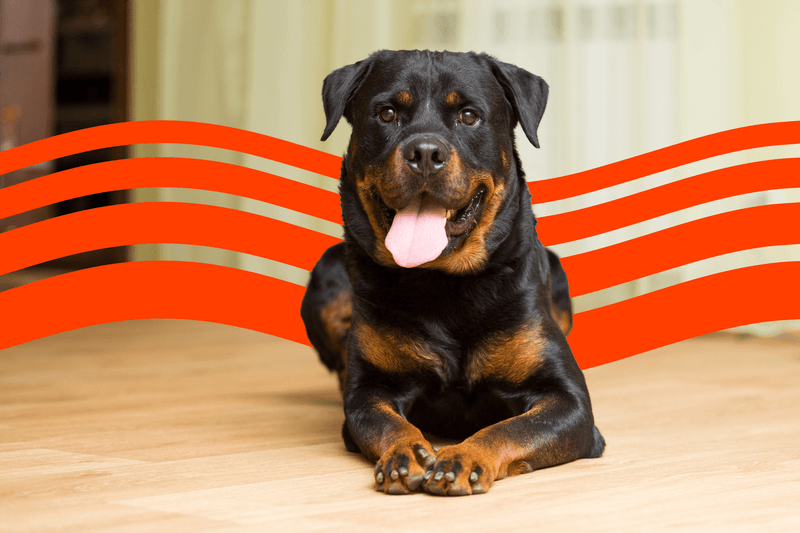
The cost of owning a Rottweiler or a Doberman includes considerations such as food, healthcare, and grooming. Rottweilers, with their larger size, may incur higher food expenses and potential health care costs due to breed-specific conditions.
Dobermans, while generally healthy, also require regular veterinary care and a balanced diet to support their active lifestyle. Grooming costs for both breeds remain moderate, given their low-maintenance coats.
Understanding these financial aspects helps prospective owners budget for their dog’s lifetime needs, ensuring they can provide the necessary care and support. Evaluating the cost of ownership is crucial for a fulfilling and sustainable relationship with these loyal guard dogs.
19. Breeding And Lineage
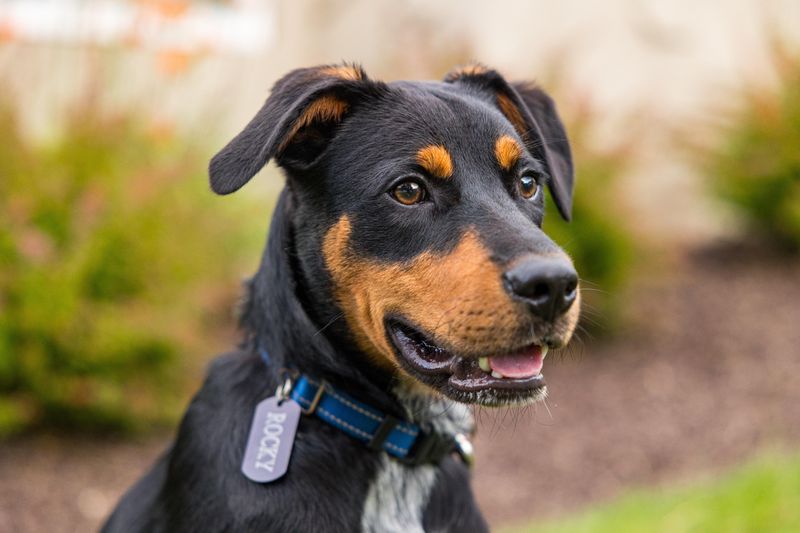
Breeding practices and lineage can significantly impact the traits and health of Rottweilers and Dobermans. Reputable breeders prioritize health and temperament, selecting breeding pairs that exemplify the best qualities of each breed.
Prospective owners should seek breeders who conduct health screenings and provide clear documentation of lineage. Understanding a dog’s pedigree can offer insights into potential health issues and behavioral traits.
Investing time in researching breeding practices ensures that owners acquire a healthy and well-adjusted dog, ready to fulfill its role as a guard dog. Responsible breeding contributes to the overall well-being and longevity of Rottweilers and Dobermans, enhancing their capabilities as loyal protectors.

